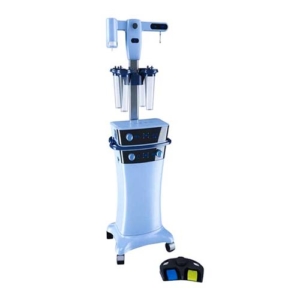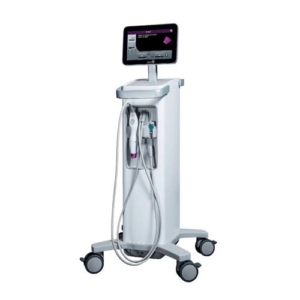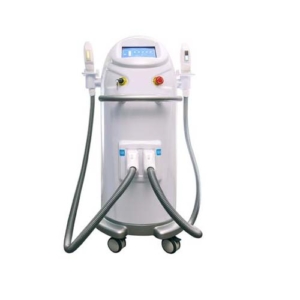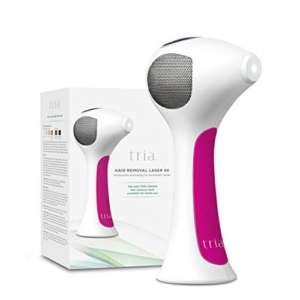Our products
- Skin laser
- Hair Removal Laser
- Lipo suction
- Cool Sculpting
- Micro needling
RF
IPL
- Sterilization Equipment
- Electric & Hydraulic Beds
- Waxing Kits
- Dermo cosmetics
- Hair products
A Targeted Approach
- We present the most advanced Skin & Hair treatment products
- We help you choose the appropriate products according to your needs
- We train & educate
- We provide after sales services
- We have financial solutions
Vaserlipo®
Vaser liposuction is a method which is utilized to change the form and size of the body by expelling fat stores. Vaser represents Vibration Amplification of Sound Energy at Resonance. It is a particular ultrasound procedure used to separate fat cells by infusing a bloated fluid, or a saline solution blended with analgesics, into the body area being dealt with, then conveying ultrasonic waves to break the fat cells. When the fat cells have been separated, the restorative specialist can expel abundance fat through a suction procedure (the liposuction part of the method). The ultrasound utilized during a vaser liposuction method accompanies certain advantages, contrasted with conventional liposuction systems….


Thermage®
Radio-frequency skin tightening is a procedure that utilizes radio frequency (RF) waves to increase the temperature in the tissue which results in augmented subdermal collagen generation. And the increased collagen helps to reduce the appearance of fine lines and tightens loose skin. The method prompts tissue rebuilding and generation of new collagen and elastin. This procedure could be an alternative to facelift and other corrective medical procedures.
By controlling skin temperature during treatment, RF can likewise be utilized for heating and decrease of fat. At the time being, the most well-known uses of RF are to noninvasively treat loose skin by “tightening” (including sagging jowls, abdomen, thighs, and arms), decrease wrinkles, cellulite improvement, and body shaping
Dermalease® IPL
Intense pulsed light (IPL) is a technology with light beam utilized by restorative and aesthetic specialists to perform several different skin treatments for stylish and remedial purposes, including hair removal, photorejuvenation (for example the treatment of skin pigmentation, sun damage, and thread veins) also for some dermatologic diseases, like acne. IPL is progressively utilized in optometry and ophthalmology too.
The technology utilizes a powerful, hand-held, PC controlled flashgun to convey an extreme, visible, wide range beam of light, generally in the visible spectral range 400 to 1200 nm. Different cut-off filters are commonly used to specifically shift through shorter wavelengths, particularly the possibly harming ultra violet light. The subsequent light has a spectral range that aims particular structures and chromophores (for example melanin in hair, or oxyhemoglobin in veins) that are warmed up to the point of destruction and reabsorbed by the body. IPL shares a few likenesses with laser treatments, in that the two of them utilize light to heat and affect their targets. But, not similar to lasers that utilize a single wavelength (color) of light which regularly matches just a single chromophore and therefore just treats one condition, IPL utilizes a wide range that when utilized with interchangeable filters, enables it to be utilized against several conditions. This can be accomplished when the IPL expert chooses the suitable filter that matches a particular chromophore


Tria® Hair removal Skin laser
Laser hair removal is the process of hair elimination via exposure to pulses of laser beam that break the hair follicle. It was carried out experimentally for approximately two decades earlier before becoming commercially available in 1995 and 1996. Laser hair removal is broadly practiced in clinics, or even in homes using devices designed and priced for client self-treatment. Many reviews of laser hair removal techniques, safety, and efficacy have been published in the dermatology literature.
The number one principle behind laser hair removal is selective photothermolysis (SPTL), the matching of a particular wavelength of light and pulse period to achieve highest quality effect on a centered tissue with minimum impact on surrounding tissue. Laser causes localized damage to the growing part of the hair, the follicle, by selectively heating the dark matter, melanin, thereby heating up the basal stem cells inside the follicle without heating the rest of the skin. Light is absorbed by dark objects however reflected by water and light objects, so laser energy is absorbed by dark material within the hair or skin, with a higher speed and intensity than just the skin without any dark hair or melanin.
